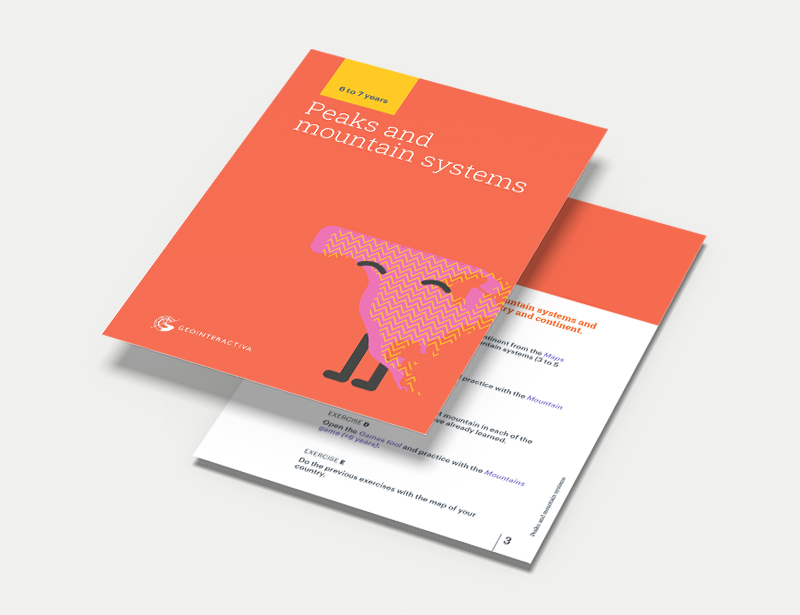
Elementary (6-7 years old)
Peaks and mountain systems
In this activity, you will discover the main peaks and mountain systems of the world.
In this downloadable, you will find a PDF resource with instructions to enhance your classroom dynamics. On one hand, we guide you through the platform tool you’ll be using, and on the other hand, we provide activities suitable for 6-7 year-old students.
Do you want your classes to be engaging? Start right away with Geointeractiva.
We suggest teaching geography in a fun way.
What will your students learn with this educational activity?
The importance of peaks and mountain systems
Geography is a discipline that allows us to understand the relationship between humans and the environment in which we live. In this sense, it is important to encourage knowledge of the peaks and mountain systems of the continent to which children belong from an early age.
Why is it important to know about peaks and mountain systems?
Firstly, knowing about peaks and mountain systems helps children understand the importance of relief in shaping the territory. Through knowledge of geographical features, students can understand how mountains were formed and how their presence influences the climate, hydrology, flora, and fauna of a particular place.
Furthermore, knowing about peaks and mountain systems allows children to become aware of the geographical and cultural diversity of the continent they live in. Mountains are spaces of great natural and cultural richness where different forms of life and traditions develop. Therefore, knowing about these regions allows them to broaden their worldview and value diversity as wealth.
Finally, knowledge of peaks and mountain systems can also promote outdoor activities and sustainable tourism. Mountains are a very important tourist resource, and knowledge about them can contribute to promoting responsible and sustainable practices in tourism.
How can we teach about peaks and mountain systems in the classroom?
To teach about peaks and mountain systems in the classroom, it is important to use different resources and didactic strategies that allow children to learn about the characteristics of these regions in a fun and participatory way.
One strategy that can be used is the use of maps to represent different mountainous regions. This allows children to visualize the location of different mountain systems and the characteristics of the terrain in a concrete way.
Another interesting strategy is to organize field trips to directly experience the mountain systems in the region. In these trips, different activities can be carried out, such as identifying flora and fauna, observing the landscape, or hiking.
Finally, digital resources such as Geointeractiva can also be used to expand knowledge about mountain systems and the ways of life that develop in them.
Conclusion
In conclusion, knowledge of peaks and mountain systems is a very interesting topic to work on in the school teaching of geography. Knowing about these regions allows children to understand the importance of relief in shaping the territory, value the geographical and cultural diversity of the continent they live in, and promote outdoor activities and sustainable tourism.
To teach about peaks and mountain systems, it is important to use different didactic strategies such as the use of maps and models, organizing field trips, and using digital resources such as Geointeractiva. In this way, children can learn about the characteristics of these regions in a fun and participatory way and understand their importance in shaping the territory and the geographical and cultural diversity of the continent they live in.
Ultimately, knowing about peaks and mountain systems is an opportunity to promote interest in geography and environmental conservation in a fun and educational way.